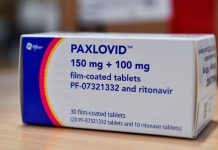Chinese researchers developed a new strategy that could help improve the quality assessments of generic drugs, according to the European Pharmaceutical Review (EPR).
The strategy could not only enhance generic drug quality consistency but also serve as a basis for regulatory decision-making.
Generic medicines are nothing but a copied version of brand-name drugs, containing the same active ingredient and indications, but are much cheaper. Like branded drugs, generic drugs must meet the same quality standards and regulations laid by the Food and Drug Administration (FDA).
Lead researchers Prof. Changqin Hu of the National Institute for Food and Drug Control and Prof. Xiaomei Ling of Peking University created the strategy to enable the quality assessment of generic drugs developed by different processes.
The work, published in the Journal of Pharmaceutical Analysis, has demonstrated the potential of an assessment strategy based on quality by design (QbD), according to EPR.
Explaining the strategy, Prof. Hu said, “According to QbD concept, quality of drugs can be maintained by ensuring the quality during each step of the design, development and manufacturing process.”
“To develop an evaluation strategy that would assess the commonalities among different processes of generic drug development, we aimed to define universal indicators and methods to characterize different processes used for the same pharmaceutical product,” he added.
The researchers used information on drug development processes available in the National Evaluation Sampling and Test Project (NESTP) – China’s domestic generic drug evaluation information source. They characterized the processes based on critical evaluation attributes (CEAs) and then used the statistical process control (SPC) method to investigate the process indicators (PIs) in the process population, such as mean distribution, batch-to-batch difference, and abnormal quality probability.
The team established rules for the risk assessment and visualizing key parameters, developing an assessment process called “population pharmaceutical quality assessment.” They applied it to generic drug consistency assessment, process risk assessment, and quality trend tracking.
Dr. Yu Zhao of the National Institutes for Food and Drug Control and Peking University commented, “The newly developed method emerged as an effective and economical means to improve product quality by discovering key issues in drug quality evaluation through data mining.
Moreover, the method would likely facilitate timely prediction of various hidden but avoidable quality hazards, serving the regulatory perspective.”
The researchers concluded, “By leveraging the continuous addition of data in the knowledge base, they can improve their strategy further enabling superior decision-making for drug regulation.” The story was published Monday on EPR.























